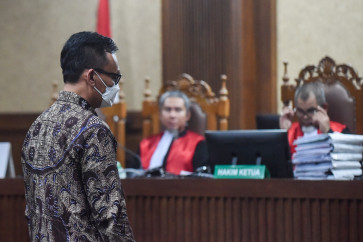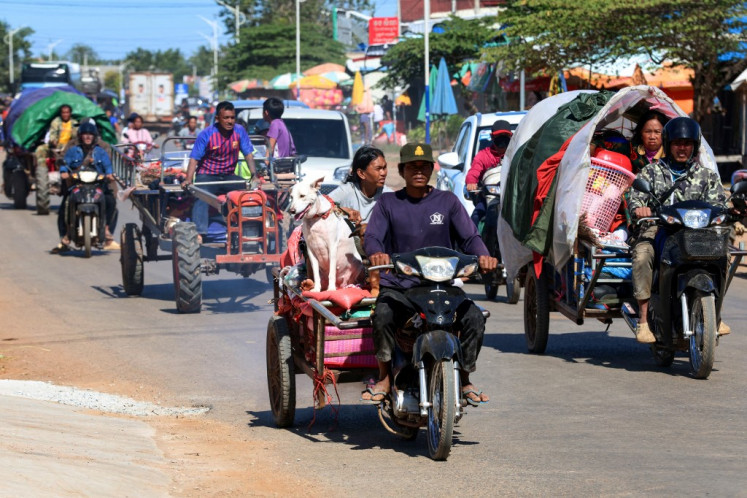Popular Reads
Top Results
Can't find what you're looking for?
View all search resultsPopular Reads
Top Results
Can't find what you're looking for?
View all search resultsRI falling behind in healthcare: UNDP report
The Human Development Report 2009 just released by the United Nations Development Program (UNDP) is a major blow to Indonesia, with signs the government is still not spending enough on healthcare, experts say
Change text size
Gift Premium Articles
to Anyone
T
he Human Development Report 2009 just released by the United Nations Development Program (UNDP) is a major blow to Indonesia, with signs the government is still not spending enough on healthcare, experts say.
In its Human Development Index (HDI), the report ranks Indonesia 111th among 182 countries studied, slumping from 107th place in 2007/2008, 108th in 2006 and 110th in 2005.
With life expectancy serving as one of index components, the Health Ministry‘s performance in the next five years has come into question.
Based on the report, despite an improvement from previous years, Indonesians can only expect to live to 70.5 years on average, below war-plagued Palestinians who live to 73.3 and Sri Lankans to 74.
The average life expectancy in Indonesia is lower than that of Palestine and Sri Lanka because it has higher infant and maternal mortality rates, Hasbullah Thabrany, a professor in public health at the University of Indonesia told The Jakarta Post.
“The government provided too little in its health budget of only 2 percent [of GDP], which is no doubt smaller than the health budgets of Palestine or Sri Lanka,” he said.
“We have made progress, but not enough. We are walking while others are running.”
In its report, Health Financing in Indonesia: A Reform Roadmap, launched earlier this year, the World Bank says in the past four decades the Indonesian government has made major improvements.
The improvements were reflected in several key areas influencing life expectancy, including infant, child and maternal mortality rates, which have been declining since the 1990s, it says.
However Indonesia still has the highest maternal mortality rates in East Asia.
Indonesia has seen its health expenditure increase from 1.9 percent of the GDP in 1996 to 2.2 percent in 2006. Meanwhile in terms of government spending, healthcare spending increased from 4.3 percent of the state budget to 5.3 percent, over the same period.
This rate is far lower than the average for East Asia and the Pacific region, as well as the average for lower-middle-income countries in general, which allocated an average 10 percent of their government spending to healthcare in 2006, the report says.
This was coupled with an inefficient healthcare system that has been plagued by uneven access to health services, especially for those living in remote regions, it says.
Indonesia needs to increase its health workforce, with its doctor-to-population ratio at only 21 doctors per 100,000 people, compared to 58 in the Philippines and 70 in Malaysia, the report
suggests.
Early in 2005, the government, through the Health Ministry, launched an insurance for the poor program called Jamkesmas, which was supposed to provide health insurance for 76.4 million low-income earners across Indonesia.
However, a group of NGOs, naming itself the Coalition for a Pro-Democracy Cabinet, has criticized the Health Ministry for its poor implementation of program.
The Health Ministry could not be reached for comment.










